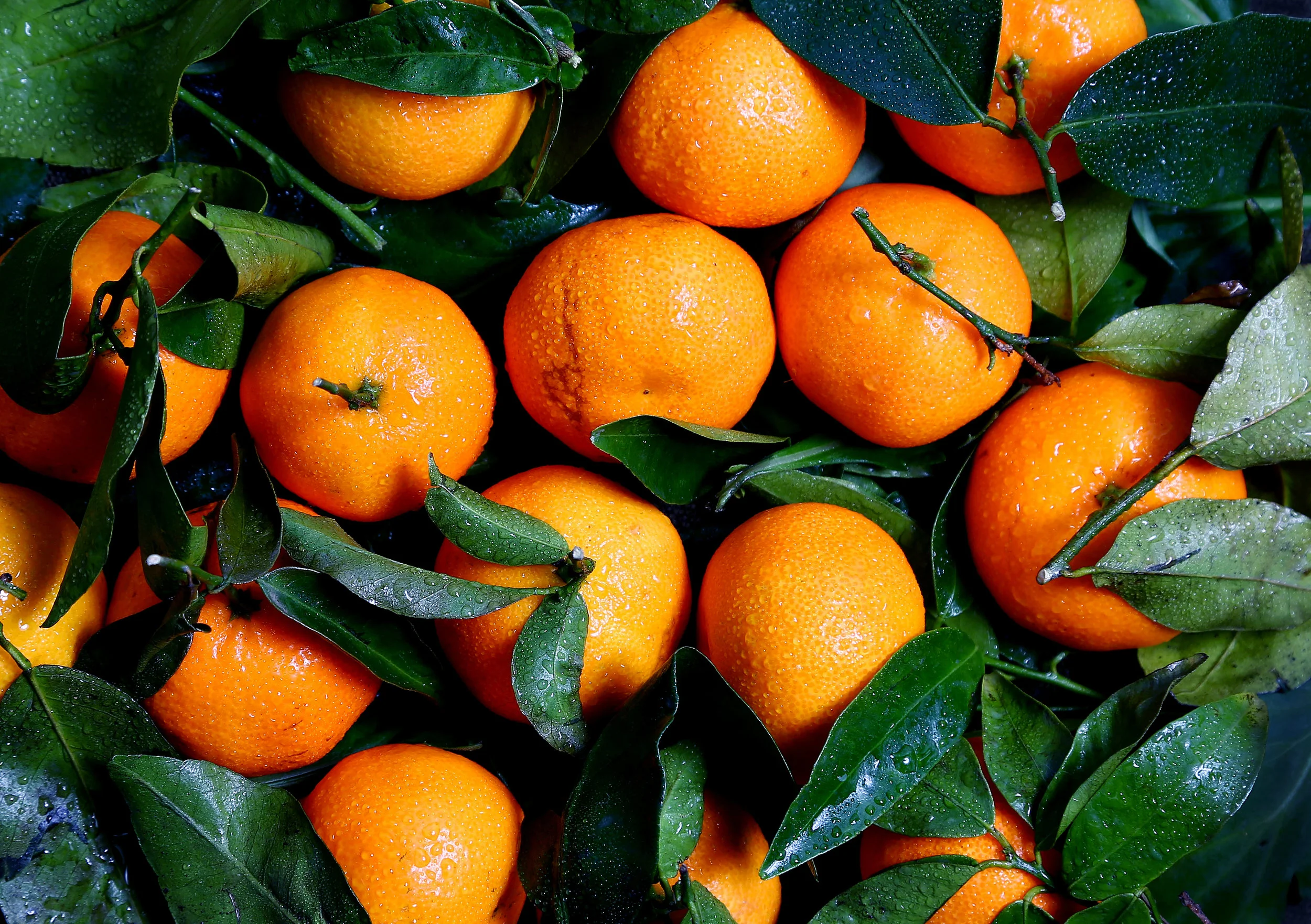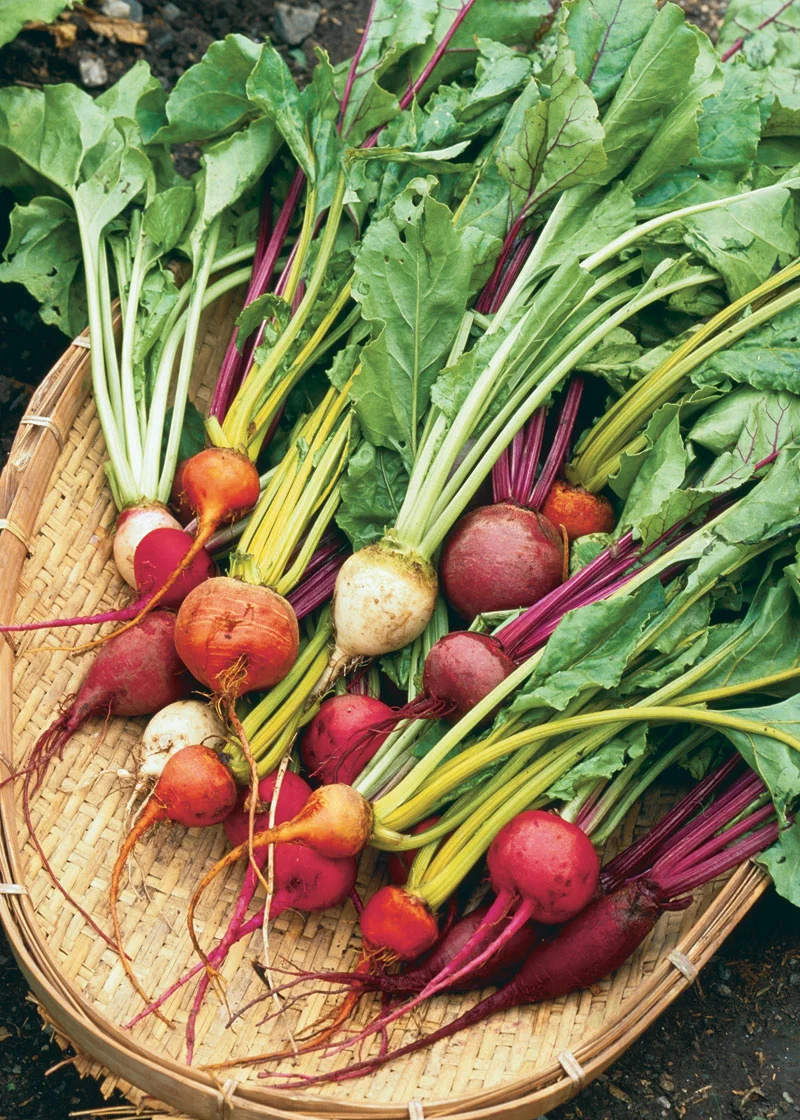There is not a clear answer for this; however, intermittent fasting should not be treated as an effective weight loss strategy. Many do experience weight loss, but intermittent fasting is difficult to sustain long-term and weight gain will most likely follow after one resumes a regular diet.
Viewing entries in
2017
It’s getting close to the holiday season, a time for heart-warming sweets and holiday parties. Shortly after this festive time comes New Year’s Resolutions of losing that holiday weight gain and eating healthier. Instead of feeling guilty, let’s talk about healthier recipes and how to mindfully indulge to enjoy yourself without missing out on pumpkin pie and other delicious treats.
Cauliflower is a delicious cruciferous vegetable in abundance this time of year. Enjoy roasted cauliflower, cauliflower fried "rice" and a cauliflower crust pizza.
Eating grass-fed is a conscious decision to eat animal products from animals who are eating their natural diet. It is healthier for the animals to be eating their natural diet and healthier for us as human beings. The food is more wholesome when the animal can eat their natural diet of grass, which often is infused with other greens making their diet high in nutrients.
Here in New York City our access to locally grown produce is limited as we are in an urban environment. Community Supported Agriculture provides us access to fresh produce that is locally grown in nearby communities outside of the city.
When strongly craving a certain decadent snack or dish, we should not deprive ourselves, but indulge mindfully.
An average medium sized banana contains about 14 grams of sugar, which is about 53% of its total 105 calories.
Being a "locavore" means one is part of a movement which aims to connect food producers and food consumers in the same geographic region, in order to develop more self-reliant and resilient food networks.
It’s a new season, which means new produce and new recipes to try! This month’s post features the parsnip, a root vegetable that is related to the carrot. Parsnips look like a white version of carrots and can be enjoyed raw or cooked.
Nutrition trends often come from near and far, and some stay for years or only a few months. One nutrition trend, however, seems like it’s here to stay!
Vegetarians have plenty of options when it comes to consuming proteins, and many of these are lower in fat and higher in fiber, vitamins, and minerals in comparison to most animal protein sources.
Summer is just around the corner and the majority of us are looking forward to warmer temperatures and more time outdoors. This also means an increase in fun food opportunities like barbeques and picnics with friends and family.
As we get ready to put our winter clothes away, and prepare for spring, its always exciting to learn about the seasons freshest produce. There are many delicious fruits and vegetables that are “spring friendly”, but one that is both tastes and looks good is beets.
One of the newest nutrition trends on the rise has been the conception of alternative pastas. This newest trend has become particularly popular due to the increased interest in low carb, paleo and gluten free diets causing many people to gravitate toward swapping out their big bowl of wheat pasta for a substitute that has a similar taste and flavor without the high carbohydrate load.
True or False: Every Nutritionist is a Dietitian
Written by Arielle Kestenbaum | Reviewed by Adiana Castro, RD, MS,CDN, RDN
Every Nutritionist is a Dietitian. This is False.
Although many dietitians will refer to themselves as nutritionist, not all who refer to themselves as nutritionists are dietitians. The main difference between a nutritionist and a dietitian is the level of education and medical nutrition therapy clinical exposure. Anyone that studies wellness and nutrition can call themselves a “nutritionist”, but to become a dietitian, one must obtain certain certifications and licensures, and therefore the role of a dietitian is more regulated than that of a nutritionist.
After earning a Bachelor’s degree from an accredited university, as well as having completed many nutrition science courses, a dietitian usually must first complete a dietetic internship or practice program rotating many different areas within the scope of practice of a dietitian. For example, interns are required to rotate within healthcare facilities, food service companies and community settings, where they can be monitored and supervised. After completing the internship, an intern is required to take the national examination before obtaining the Registered Dietitian (RD) credential.
Once registered as a dietitian, they are able to organize food and nutrition plans and promote healthy eating habits to prevent and treat illnesses. They can also work within schools to teach nutrition education, as well as conduct research on many public health issues. There are so many different roads for a dietitian to go that falls under their scope of practice, that would not necessarily be OK for a nutritionist.
The term “nutritionist” is much broader, as it is not as regulated in the United States. Nutritionists typically do not have any professional training, and therefore should not be involved in the diagnosis or treatment of any disease. They definitely can be present for any type of support, as well as promotion of healthy lifestyles, but they cannot partake in the medical nutrition therapy aspect of nutrition (the therapeutic approach to treating medical conditions and their symptoms through specific diets).
Registered Dietitians and nutritionists both want to help people eat better and be healthier, but the education and practical training dietitians receive make them the true experts. This is something to keep in mind whether wanting to enter the field of nutrition or seeking expert nutrition advice!
Main Article: "Put Your Best Fork Forward"
Written by Desireeh Chevere | Reviewed by Adiana Castro MS, RDN, CDN, CLT
The Academy of Nutrition and Dietetics has created a campaign, called National Nutrition Month, for the month of March to advertise nutrition education and the importance of it. It is focused on helping people make informed food choices and developing sound eating and physical activity habits. What’s great about the Academy is that they have professionals that can help guide the public on gradually shifting toward a healthy lifestyle instead of doing it all on your own. The Academy is able to help the public by promoting National Nutrition Month activities and messages throughout the month. They make sure to promote the most valuable and credible source of timely, scientifically-based food and nutrition information, so be sure to be on the lookout for that!
This year the theme is “Put Your Best Fork Forward,” which serves as a reminder that all of us have the necessary tool to make healthier food choices. This month is dedicated to helping people feel empowered to making small changes in their daily lives to help improve health now and also in the long run. A healthier lifestyle doesn’t always happen overnight, so that is why this month is for helping people making small changes over time. The Academy encourages people to balance food and beverages within an individual’s energy needs, rather than focusing on a specific type of food or meal. This month is important because it will help people realize that making healthier eating choices requires a long-term commitment, which will in turn lead to a healthier and more enjoyable life. Below you will get a taste of what the Academy is promoting:
1. Think Nutrient-Rich
Think nutrient-rich rather than “good” or “bad” foods. The majority of your food choices should be packed with vitamins, minerals, fiber and other nutrients. Making smart food choices can help you stay healthy, manage your weight and be physically active.
2. Focus on Variety
Eat a variety of foods from all the food groups to get the nutrients your body needs. Fruits and vegetables can be fresh, frozen or canned. Eat more dark green vegetables such as leafy greens and broccoli and orange vegetables including carrots and sweet potatoes. Vary your protein choices with more fish, beans, nuts and seeds. Try to choose whole-grains when eating cereals, breads, crackers, rice or pasta.
3. Cook More, Eat Out Less
Convenience food isn’t as convenient as we would like, they often cost us more! Try to switch out the frozen dinners and fast food for foods that are prepared at home. Go back to the basics and find simple, inexpensive and healthy recipes to make with your family.
4. Frozen Food
Don’t let all frozen food go, especially not frozen vegetables. At certain times of the year frozen vegetables will not only help save some money but it will also last longer than fresh. For instance, you can try cooking frozen broccoli with a side of rice or pasta and chicken.
5. Plan Ahead
Planning ahead can be quite beneficial, especially when you’re busy throughout the week and don’t have much time to do things. A helpful suggestion is to plan what you would like to eat for the week before going to the grocery store. You can plan by reviewing your favorite recipes and see what kind of ingredients you will need. Also, be sure to see what foods you already have and make a list of what you are missing. This list will help avoid buying any extra items.
References:
Academy of Nutrition and Dietetics
http://www.eatright.org/resource/food/resources/national-nutrition-month/national-nutrition-month
Seasonal Recipe: Clementines
Written by Kelli Baker | Reviewed by Adiana Castro MS, RDN, CDN, CLT
During the month of March Clementines can give us a refreshing break from some of the more heavier dishes we were enjoying during the winter months. A citrus fruit somewhere between an orange and a tangerine, Clementines are juicy, sweet, and less acidic than an orange. They are typically easy to peel and divide into 7-14 segments. Clementines are high in vitamin C and folate and are not only are they great to throw in your bag for a quick snack but can also be incorporated into some lovely dishes such as the ones below.
Roasted Chicken With Clementines
Prep Time: 10 Min
Cook Time: 55 Mins.
Total Time: 1 hour
Serves 6-8
INGREDIENTS:
6 ½ tablespoons Arak (or Ouzo or Pernod)
¼ cup olive oil
3 tablespoons freshly squeezed clementine juice
3 tablespoons freshly squeezed lemon juice
2 tablespoons grainy mustard
3 tablespoons light brown sugar or honey
2 teaspoons kosher salt
Freshly ground pepper
8 bone-in chicken pieces (a mix of thighs and drumsticks is nice)
4 clementines, unpeeled, sliced thin
A few sprigs of thyme
2-3 medium onions cut lengthwise then into quarters
2 ½ teaspoons fennel seeds, lightly crushed
INSTRUCTIONS:
1. In a large mixing bowl, whisk together arak, oil, clementine and lemon juices, mustard, brown sugar and salt. Season with pepper to taste.
2. Marinate chicken with mixture, clementine slices, thyme sprigs, onion pieces, and crushed fennel seeds in a large mixing bowl or zip lock back. Turn several times to coat. Marinate chicken for several hours or overnight.
3. Preheat oven to 475 degrees F. After 30 minutes, check on the chicken. If the skin is browning too quickly, turn the oven down to 400 degrees F and continue roasting until the skin is brown and crisp, 20-25 minutes longer.
4. Transfer chicken and Clementines and onion pieces with juices to a serving platter. Let rest 5-10 minutes before serving.
Recipe by: alexandracooks.com
Effortless Clementine, Carrot and Mint Salad
Serves 6
INGREDIENTS:
12 clementines, peeled
2 large carrots, peeled
1 teaspoon red onion, finely chopped
1 tablespoon extra virgin olive oil
½ teaspoon coarse kosher salt
1 handful fresh mint leaves, torn
INSTRUCTIONS:
1. Once the clementines are peeled slice them horizontally, like the equator. You should be able to get about 5-6 slices from each clementine. Arrange them on a large platter, overlapping slightly.
2. Using a vegetable peeler, shave the carrots directly on top of the clementine slices. They will create loose curly cues on top.
3. Sprinkle chopped red onion over the salad.
4. Pick fresh mint leaves off their stems. When you have a good handful, give them a rough tear, arrange on top of the salad anywhere that needs color.
5. Drizzle with a healthy dose of olive oil, and coarse salt.
Recipe by: Food 52.com
Clementine Granita
Prep: 30 mins.
Total Time: 3 Hours 40 mins.
Servings: 4
Yield: Makes 12
INGREDIENTS:
12 clementines, plus 12 more for juicing
½ cup sugar
1 slice (½ inch) peeled fresh ginger
1 tablespoon fresh lemon juice
DIRECTIONS:
1. Slice the top ½ inch off each clementine; reserve. Cut around flesh and scoop out into a sieve set over a bowl; reserve skins and be careful not to tear them. Press flesh to extract juice. Squeeze in juice from tops. (You’ll have about 1 cup.) Juice more clementines to yield 2 cups.
2. Moisten clementine skins with some juice or water. Roll skins in ¼ cup sugar to coat. Freeze until solid, about 2 hours.
3. Bring remaining ¼ cup sugar, ¼ cup water, and ginger to a boil in a saucepan, stirring, until sugar dissolves. Remove from heat. Let stand for 30 minutes; discard ginger. Stir in 2 cups juice and the lemon juice; transfer to a nonreactive 8-inch square-baking dish. Freeze until solid, about 3 hours.
4. Scrape granite with a fork to fluff. Spoon granita into clementine “cups.” Freeze for 10 minutes before serving.
Recipe by: Marthastewart.com
Written by Cheyenne Watts | Reviewed by Adiana Castro MS, RDN, CDN, CLT
Recently you may have gone out for a nice, sit-down meal at a trendy New York City restaurant. The menu is made of recycled cardboard, the ink used to print the meal options is eco-friendly, and the furniture upon which you sit and dine is made of reclaimed materials collected from ship wreckage. You begin to consider the options, but are overwhelmed by the options- Do you want free-range chicken from Upstate New York? Or would you prefer grass-fed beef that roamed on a 50-acre pasture? Or, perhaps, you’d like to order the goat that was raised by a traditional two-parent family with a steady income, and went to a private school for gifted goats? That last option is a silly exaggeration, but it brings us to the point that the Farm-to-Table trend has gotten a bit out of hand. The line between serving food that is truly local and telling utter lie to keep up the establishments’ appearances has become blurred, but this does not mean fresh foods are impossible to find.
Farm-to-table is a social movement which promotes serving local food at restaurants and school cafeterias, preferably through direct acquisition from the producer. Farm-to-table often incorporates a form of food traceability, or knowing where your food comes from, where the farm or garden the food originates is made known.
The farm-to-table movement has arisen more or less concurrently with changes in attitudes about food safety, food freshness, food seasonality, and small-farm economics. Alice Waters, restauranteur of Chez Panisse and mother of the Slow Food movement, began listing the farms on her restaurant menus to “remind people that food really did grow on farms,” (Vanity Fair, 2015).
Restaurants, schools, and hotels alike want to source locally and follow a farm-to-table method because locally sourced food is more frequently organic (meaning it doesn’t use GMOs), tastes better (because it hasn’t been picked early and shipped in a truck), it comes from small family farms, and there are more unique types varieties of fruits and vegetables.
Recently, farm-to-table eating has become more available to the general public through farmers markets and monthly food box subscriptions. Families can visit the farmers market on the weekend to pick out organic produce, fresh baked goods, homemade jams, and grass fed meat to cook for a wholesome dinner. Also, some subscription food boxes source locally when possible and only buy their product from organic, small farms.
New York City is home to many farm-to-table restaurants. You can find a comprehensive list of some of the most famous ones here. In addition, you can find all of your local farmers markets on this site.
If you want to support local farmers, eat healthier and more delicious food, and reduce your carbon footprint, please try out a new farm-to-table restaurant, or cook a meal with your family using produce you purchased at a local NYC Farmers Market. Happy Eating!
Written by Cheyenne Watts | Reviewed by Jennifer Calo MS, RDN, CDN, CDE, CLT
LET’S RAISE AWARENESS!
In February of 1964, President Lyndon B. Johnson declared the first National Heart Month to raise awareness of cardiovascular health, the leading cause of death for both men and women in the United States. Often people will wear red to honor the holiday, to remember those who have lost their lives to heart disease, and resolve to improve its prevention, detection, and treatment. Scientific research proves that diet plays a big role in the prevention and intervention of cardiovascular disease and stroke. One such heart-healthy food is the focus of our recipe article of the month: beets!
WHY EAT BEETS?
Beets contain naturally occurring nitrates, which are converted into nitric oxide in your body. Nitric oxide, in turn, helps to relax and dilate your blood vessels, improving blood flow and lowering blood pressure.
Beets also contain a nutrient called betaine which helps protects cells, proteins, and enzymes from environmental stress. It's also known to help fight inflammation and may prevent cardiovascular disease. According to Dr. Axe, there have been promising studies that suggest betaine boosts muscle mass and strength, aides in improved endurance, and helps to lower fat in the body.
While beets may stain your teeth and skin the color of Barney the Dinosaur, the very phytonutrients that give red beets their deep color contain some anti-cancerous properties. The flavonoid betazyane in beets has proven to inhibit tumor growth, and high iron content increases cellular respiration which allows the body to kill cancer cells.
Along with it’s superpower properties, beets contain many micronutrients necessary in our diet such as fiber, calcium, iron, vitamins A and C, folic acid, manganese, and potassium.
HOW CAN I ENJOY BEETS?
Here’s the thing: we know that some people have not eaten and will not eat a beet. You may think that beets are “yucky”, “weird”, or have an “odd texture”. That’s alright! We are here to provide you with three recipes to assist you in introducing this nutrient-dense and healthful root vegetable into your diet. You won’t even know you’re eating beets! Except your food might be pink… but that’s more festive anyway!
ROASTED BEET HUMMUS by Minimalist Baker
Prep time 10 mins
Total time 10 mins
Super creamy roasted beet hummus featuring a whole roasted beet, lemon, plenty of garlic flavor. Perfect with chips, pita, veggies or as a sandwich spread. (Vegan)
Serves: 6
Ingredients
1 small roasted beet
1 15 oz. can (1 3/4 cup) cooked chickpeas, mostly drained
zest of one large lemon
juice of half a large lemon
pinch salt and black pepper
2 large cloves garlic, minced
2 heaping Tbsp tahini
1/4 cup extra virgin olive oil
Instructions
Preheat oven to 375°F, remove the stem and most of the root from your beets, and scrub and wash them underwater until clean.
Wrap beets in foil, drizzle on a bit of canola oil, wrap tightly, and roast for one hour or until a knife inserted falls out without resistance. They should be tender. Set in the fridge (in a bowl to catch juice) to cool to room temperature.
Once your beet is cooled and peeled, quarter it and place it in your food processor. Blend until only small bits remain.
Add remaining ingredients except for olive oil and blend until smooth.
Drizzle in olive oil as the hummus is mixing.
Taste and adjust seasonings as needed, adding more salt, lemon juice or olive oil if needed. If it’s too thick, add a bit of water.
Will keep in the fridge for up to a week.
Nutrition Information
Serving size: 1/6 batch
Calories: 165 Fat: 12g Carbohydrates: 12g Sugar: 1.2g Fiber: 2.6g Protein: 3.4g
BERRY, BEET, MINT, LIME, AND CHIA SEED SMOOTHIE by Claire Saffitz for Bon Appetit
Choose whichever alternative milk you’d like- nut milks add body and protein, but if you prefer something lighter, go with coconut water.
Serves: 2
Ingredients
¾ cup almond milk
¾ cup frozen blackberries and/or blueberries
¼ cup grated beet (from about 1 small)
¼ cup mint leaves
2 tablespoons fresh lime juice
1 tablespoon ground chia seeds
1 tablespoon honey
Pinch of kosher salt
Instructions
Using smoothie or ice crush setting, purée almond milk, blackberries, beet, mint, lime juice, chia seeds, honey, salt, and ½ cup ice in a blender until smooth.
Pour and serve.
Nutrition Information
Serving size: ½ recipe
Calories: 173 Carbohydrates: 35g Protein: 3.5g Fat: 6g Sugars: 25g Fiber: 8g
BARLEY AND KALE SALAD WITH GOLDEN BEETS AND FETA by Jeanne Kelly for Bon Appetit
Ingredients
Serves: 4
1/4 cup plus 2 Tbsp. extra-virgin olive oil; more for drizzling
2 tablespoons white wine vinegar
2 tablespoons (packed) light brown sugar
1/2 teaspoon finely grated orange zest
Kosher salt, freshly ground pepper
1 bunch Tuscan kale***, center ribs and stems removed, leaves cut into 1-inch squares
1/4 cup minced shallots
3 medium golden beets (about 1 bunch), trimmed
1 1/4 cups pearl barley
4 ounces feta, crumbled
2 teaspoons (or more) unseasoned rice vinegar
***Tuscan kale, also called black kale, dinosaur kale, Lacinato kale, or cavolo nero, has long, narrow, very dark green bumpy leaves and is available at farmers' markets and some supermarkets.
Instructions
Whisk 1/4 cup oil, white wine vinegar, sugar, and orange zest in a large bowl to blend; season with salt and pepper. Add kale and shallots; mix until completely coated. Cover and chill until kale is tender, at least 3 hours.
Meanwhile, preheat oven to 375°. Arrange beets in a small baking dish and drizzle with a little oil. Season with salt and turn beets to coat. Cover with foil. Bake beets until tender when pierced with a thin knife, about 45 minutes. Let cool completely. Peel beets. Cut into 1/4-inch pieces (you should have about 2 cups).
Cook barley in a large pot of boiling salted water until just tender, about 45 minutes. Drain barley and spread out on a rimmed baking sheet; let cool completely.
Add beets, barley, and feta to kale. Drizzle salad with remaining 2 tablespoons oil and 2 tablespoons rice vinegar; fold gently to combine. Season to taste with pepper and more rice vinegar, if desired.
DO AHEAD Salad can be made 2 days ahead. Cover and chill.
Nutrition Information
Nutritional Content
Serving size: ¼ recipe
Calories: 550 Fat: 27g Carbohydrates: 66g Dietary Fiber: 14g Sugars: 7g Protein: 15g
Written by Desireeh Chevere | Reviewed by Jennifer Calo MS, RDN, CDN, CLT
Calling all seafood lovers! Have you heard of the popular new food trend, Hawaiian Poke? The dish has been around for centuries but has become increasingly popular in NYC in the last couple of years. Poke (pronounced “poh-KAY”) means “chunk” in Hawaiian and it is a raw seafood salad cut into chunks, often marinated with soy sauce and sesame oil. There are many variations of the dish, but the most common is raw tuna in a marinade with onions, scallions, and seaweed. It is similar to tartare and ceviche, but with a bolder, less acidic flavor. Not only is Poke a delicious and colorful meal, it offers nutritional benefits as well!
Fish is a great source of protein that is overall low in calories and saturated fat. Poke is rich in heart healthy omega-3 fatty acids that can reduce blood pressure, heart rate, while also improving other cardiovascular risk factors. According to the American Heart Association, eating fish in moderation, such as twice a week, can reduce your risk of cardiovascular disease and stroke. Fish intake can also lower your risk of mental decline and depression. While fish does contain mercury, research confirms the benefits of omega-3s far outweigh the risk of mercury contamination. Those concerned about the mercury levels of fish can opt for salmon, which is significantly lower in mercury than tuna.
There are endless varieties of Poke, and you can even make it at home! Make sure to purchase local, very fresh sashimi or sushi-grade fish. All you need is your choice of fish (salmon or tuna), vegetables (edamame, onions, carrots, or cucumber), soy sauce, sesame oil, and the best part- the seasonings! Have fun experimenting with wasabi, ginger, scallions, and even avocado for a savory flavorful meal.
This delicious food trend gets the stamp of approval from Registered Dietitian Nutritionists!





















